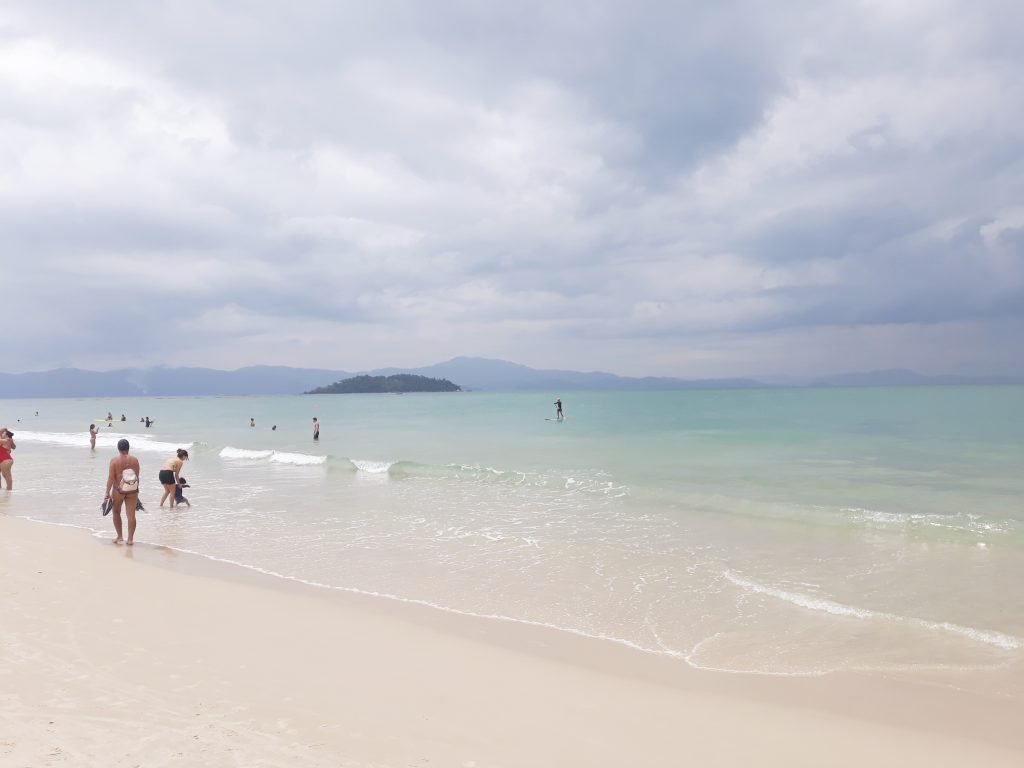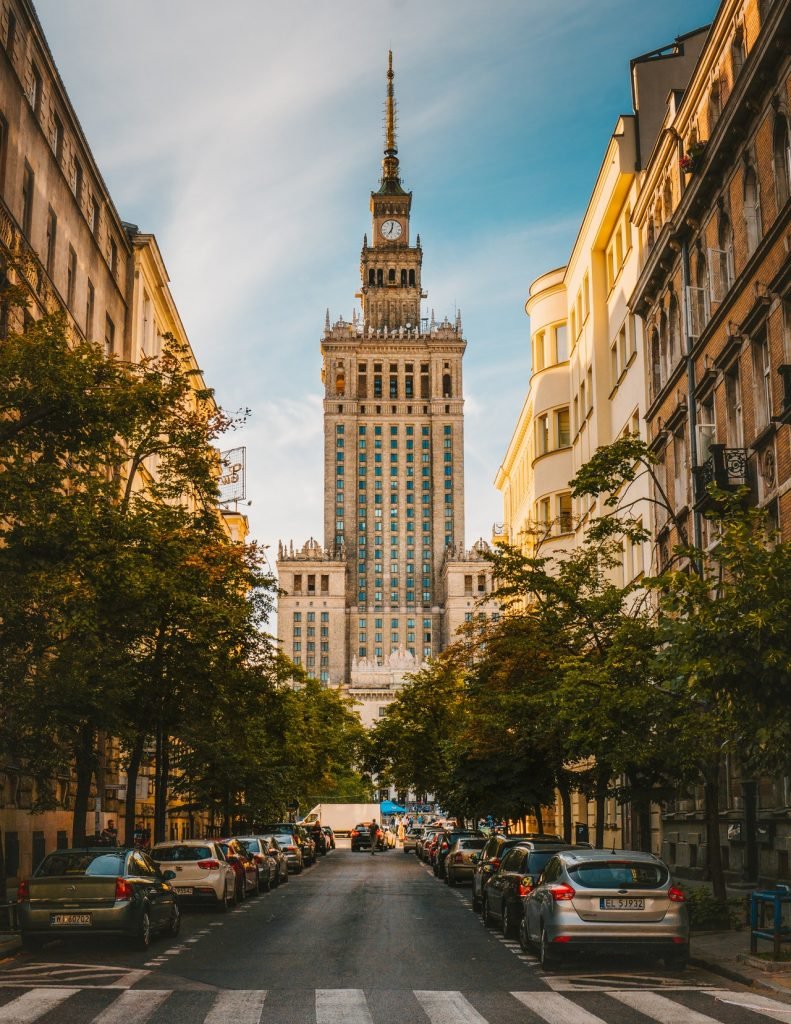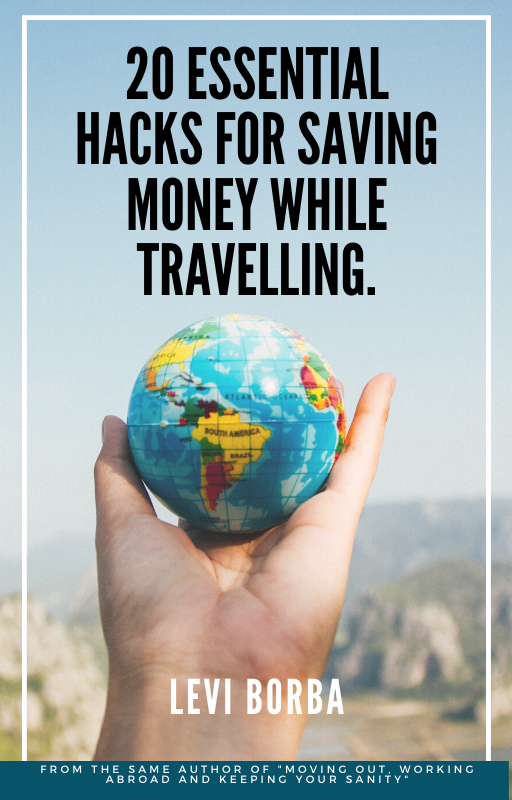Below are 4 countries to live on $1000 a month – places that can deliver what costs $3000-4000 in Western cities.
Yes, you don’t have to choose between financial security and quality of life.
I’m living proof – I’ve personally been in 56 countries over the past 12 years, and I’m currently living in one of these four right now.
In these four countries, US$1000 goes further than you ever imagined possible.
What you will get today is real, tested information from someone who’s actually done it – Not Wikipedia and chatgpt research from people who’ve never left their home country.
None of these are war zones or remote locations.
One feels like California without the taxes and fentanyl and 67% cheaper.
Another puts you in one of Europe’s safest countries, with ski resorts nearby.
Let’s start with the country that changed everything for me…
Chile
I moved to Chile and lived there for 1 year. I don’t live there anymore, but these were good times (try to guess in the comments in which one of the 4 countries mentioned I live currently – maybe my accent serves as a hint)
And this country is the best in South America in so many aspects.
- They are the most developed South American country, with the highest HDI.
- They have the highest average income.
- They are the first in the Easy to Do Business Ranking
- They have the highest economic freedom.
- They have the 2nd-lowest corruption index.
It is even difficult to find things that this country is NOT among the best in South America. For sure, they don’t have the best football, or the best cuisine (Peru is way better at this) – but in terms of socio-economic indicators, this country leads in so many aspects, that you may be thinking it is expensive to live there.
And the truth is: Yes, it is expensive – if you choose Santiago.
The Chilean capital is quite expensive.
But….
You don’t need to live there if you are not looking for work – if you are a retiree or remote worker, why would you choose an expensive city with 6.5 million people?
The secret to enjoy all that Chile has to offer, while living on less than US$1000 per month, is to look beyond the capital.
I wrote an article the best places to live in Chile – some of them are cold, even snowy – but not this city below.
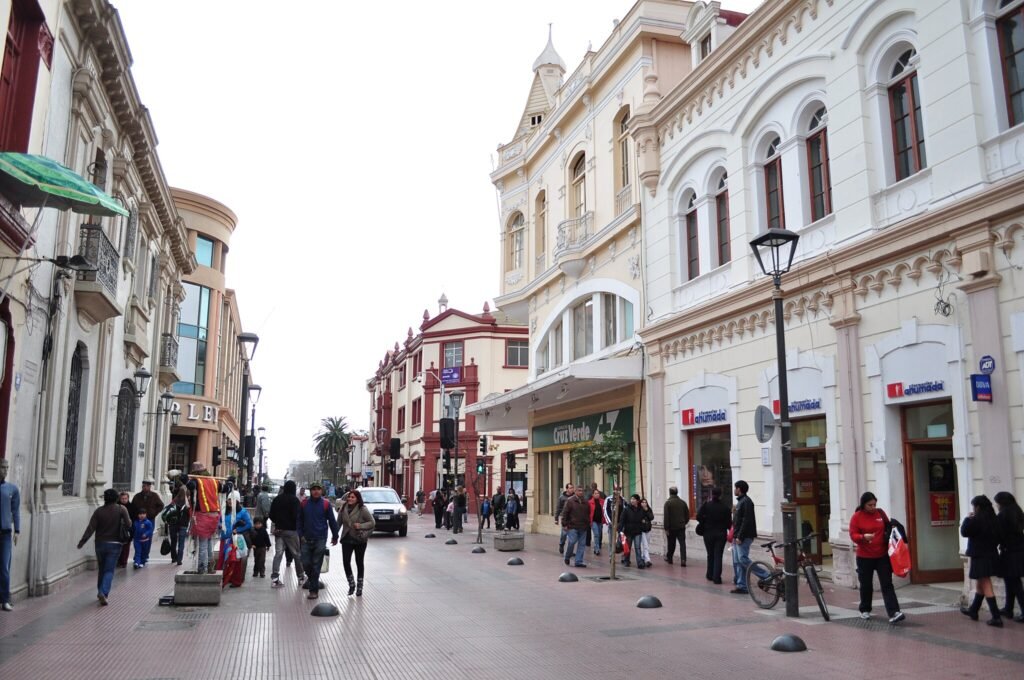
Here, you can find a sunny coastal lifestyle that costs 67% less than California, with none of the urban problems.
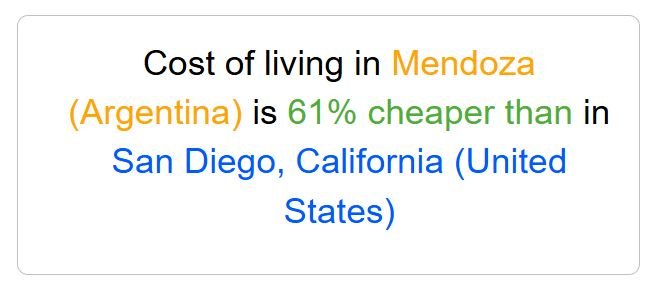
I’m talking about La Serena, a city in the Coquimbo Region, about 470 kilometers north of Santiago.
The city has about 267,000 residents, but most Americans have never heard of it. You can reach Santiago in 7-8 hours by bus or take a 1-hour flight from La Serena Airport to connect with international destinations.
La Serena has the same mild climate as San Diego, with warm, dry summers and mild winters. Expect over 300 sunny days a year. Summer highs reach around 23 degrees Celsius and winter highs near 17 degrees, with minimal rain throughout the year. You get consistently pleasant weather that locals rate 9 out of 10.
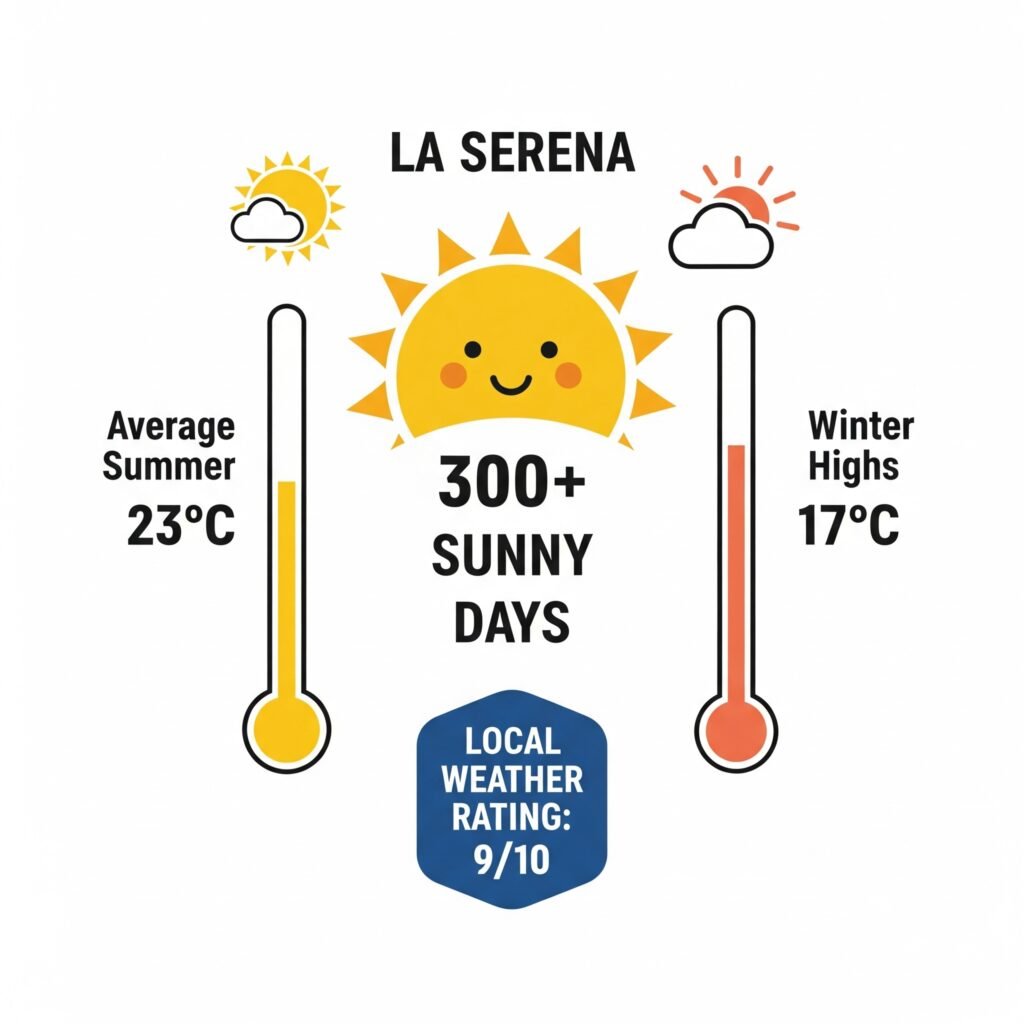
The city maintains this stable, Mediterranean climate year-round, with summer lows around 14 degrees and winter lows around 8 degrees. It rarely freezes, and most of the rain falls during the winter months.
Here’s what shocked me most – a decent apartment that would cost $2,500 per month in California runs just $341 there. That’s for a one-bedroom apartment in the city center. Your utilities run around $49 monthly, and internet costs $21 for high-speed access. These numbers seem impossible when you compare them to major California cities, but they’re real.
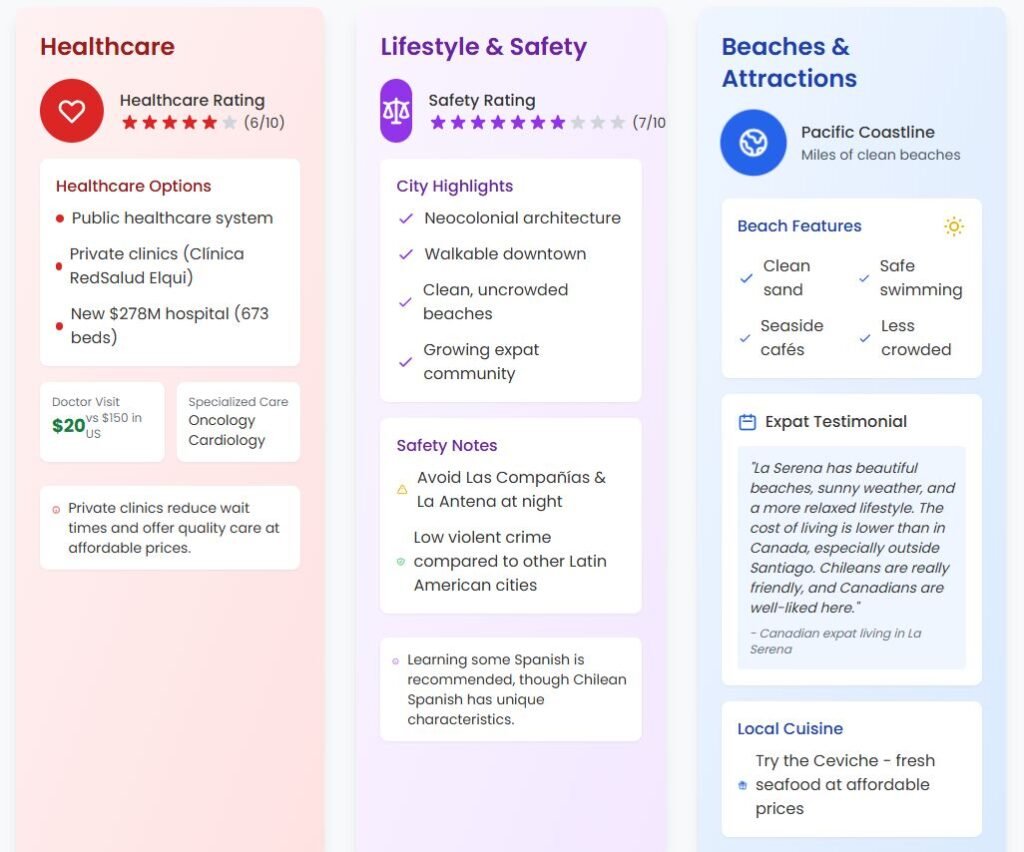
La Serena’s beaches are clean, with quieter stretches and seaside cafés where you can take in the Pacific without the crowds. The beaches stretch for miles with clean sand and safe places to relax.
This is what a Canadian expat living in La Serena told us:
“La Serena has beautiful beaches, sunny weather, and a more relaxed lifestyle. The cost of living is lower than in Canada, especially outside Santiago. Chileans are really friendly, and Canadians are well-liked here.”
Has I said before, Chile has the most developed economy in South America. The country has solid economic rules and is a key financial center in the region. Because of this stability, prices stay steady, and services work well. You won’t have to worry about the ups and downs in currency that many other affordable places have.
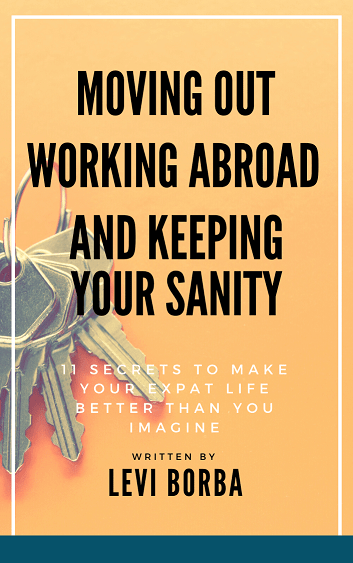
The healthcare factor here scores 6 out of 10, with both public and private options available in La Serena. Private clinics like Clínica RedSalud Elqui cut wait times, and doctor visits run around $20 instead of $150 in the US. A new $278 million hospital with 673 beds is being built, offering specialized care like oncology.
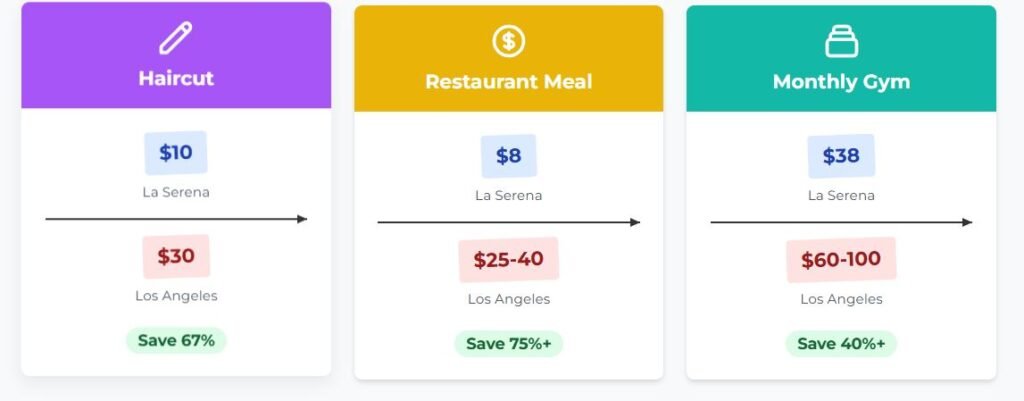
You can get a haircut for about $10, eat out for $8, and join a gym for $38 a month – try doing that in Los Angeles. Restaurant meals that would run $25-40 in California cost around $8 here, and you’re getting fresh, quality food – try the Ceviche.
La Serena stands out with its neocolonial architecture and classic Spanish design, giving the city a unique charm. Getting around is easy, thanks to a walkable downtown.
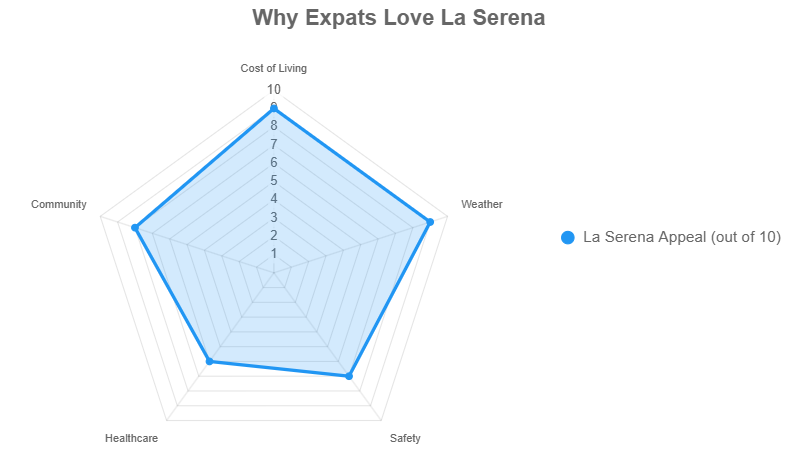
La Serena scores 7 out of 10 for safety, with low violent crime compared to other Latin American cities. However, things got a bit worse lately, according to some locals – of course, it is not as bad as Rio de Janeiro or Caracas, but it demands some attention. Some areas like Las Compañías or La Antena aren’t recommended, especially at night.

The community includes both Chilean locals and a growing number of expats, making it easier for newcomers to settle in. You’ll hear English in many places where expats meet, but learning a bit of Spanish helps you connect better with daily life.
(I would alert you, however, that Chilean Spanish is…. Weird, to say the least)
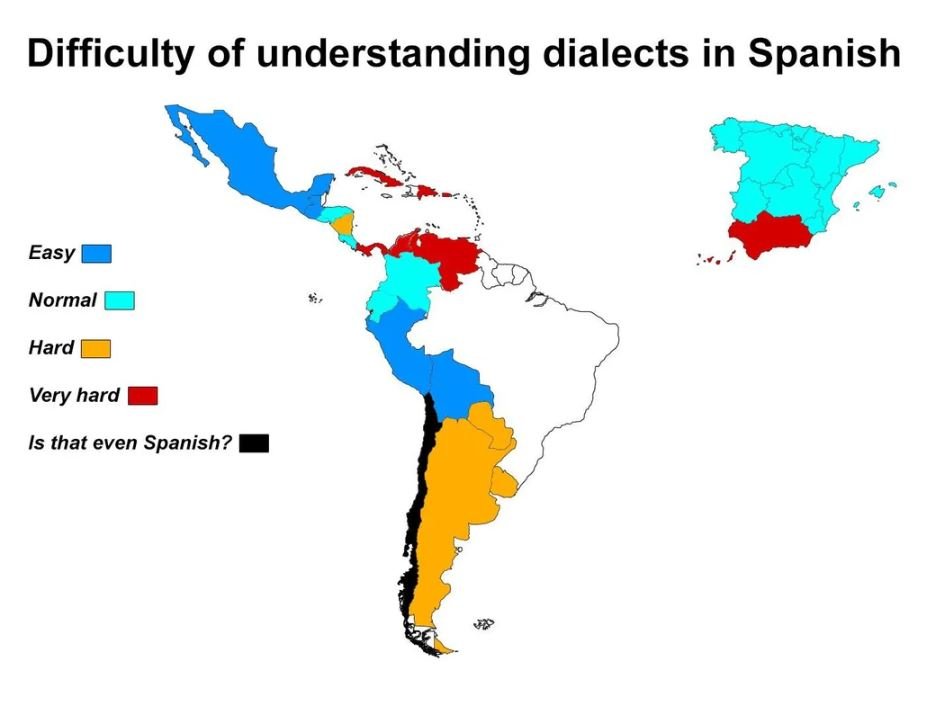
Here, a $1000 monthly budget can cover rent, utilities, food, healthcare, and entertainment with money left over. You’re looking at better weather, lower stress, and access to natural beauty, all without the urban problems you might be used to.
But Chile isn’t the only country where your dollars work magic. There’s a place in Europe where you can live for even less while enjoying full European Union benefits.
FREE FOR A LIMITED TIME: Grab your Expat Wealth & Lifestyle Compass ($108 value) today! Includes our 74-page guide of Affordable European Cities, our Zero-Tax countries report, and our expat checklist. https://bit.ly/ExpatWealthLifestyleCompass Join us here before this offer ends.
Bulgaria
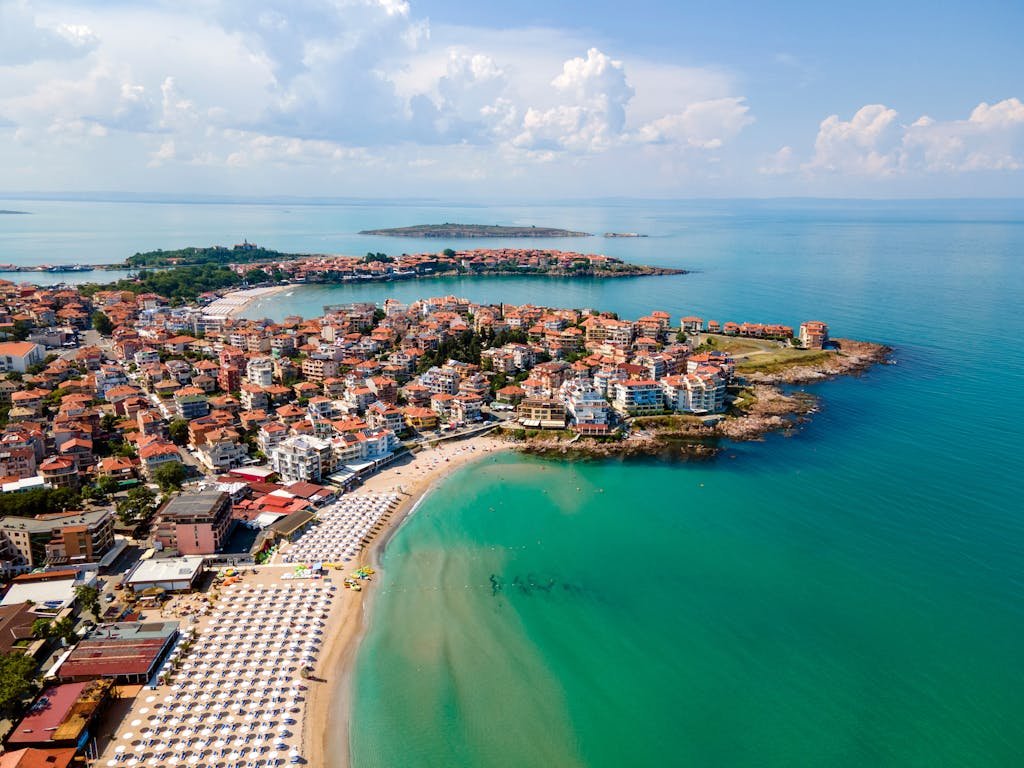
In Bulgaria, you are inside the European Union, with all the benefits it offers, while paying much lower prices. Burgas is on the Black Sea coast, and it’s one of the most affordable large beach cities in Europe.
In fact, I don’t know any other large beach city in Europe where you can live that cheap – except maybe the other Bulgarian coastal town, Varna.
So I was in doubt which one to put in this article: Burgas or Varna, and a local solved my doubt – this is what he told me:
“Burgas is much more beautiful, both the cities and the beaches, but Varna has more young people. Your choice.”
Burgas is located 360 kilometers east of Sofia, about a 6-7 hour train ride or 50-minute flight to the capital. This coastal city has around 212,000 residents in the Northern Thrace region, surrounded by the Burgas Lakes. The population makes it large enough for proper infrastructure but small enough to avoid big city problems.
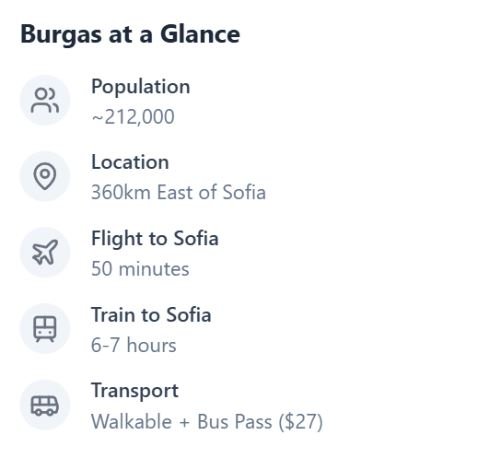
The climate in Burgas follows a humid subtropical pattern, moderated by the Black Sea. Summer temperatures from June to September average between 26 and 28 degrees Celsius, while winter highs from December to February stay around 5 degrees. Snow falls only lightly and infrequently during winter months.
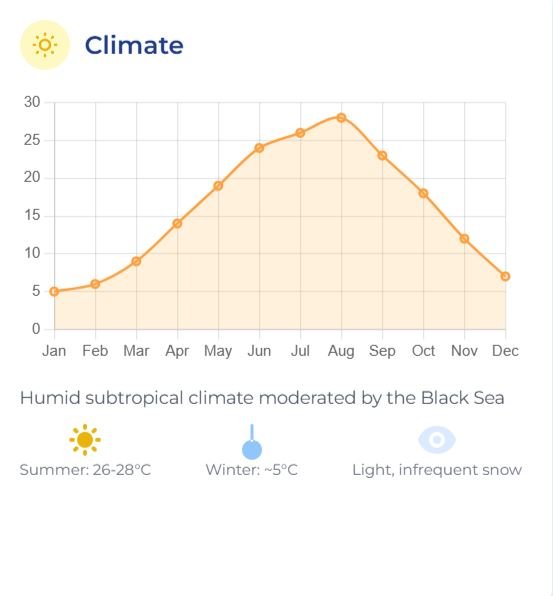
The average lunch menu costs about $6.50 – that’s what many Americans pay for a single coffee at Starbucks. You can get a cappuccino for $1.89, which costs $5-7 in most US cities. These aren’t tourist trap prices; you’re getting normal, everyday meals that locals eat at prices that seem impossible when compared to Western standards.
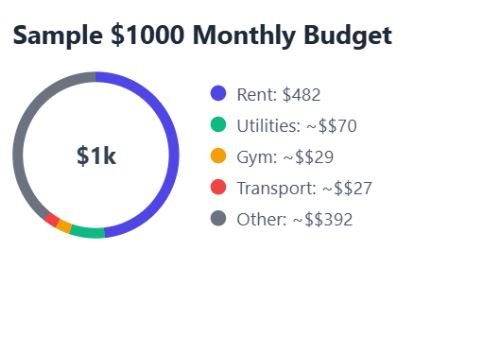
Healthcare is quite affordable. Non-EU residents can access private clinics like Life Hospital for faster service. The healthcare system operates under strict European Union regulations, ensuring you receive high-quality medical care.
Burgas beaches stretch for kilometers and remain uncrowded even in summer. The water stays warm enough for swimming from May through October, and you can find quiet spots along the shore even during peak summer months. Unlike popular Mediterranean destinations where beach access costs money and crowds make relaxation impossible, Burgas beaches remain accessible and peaceful.
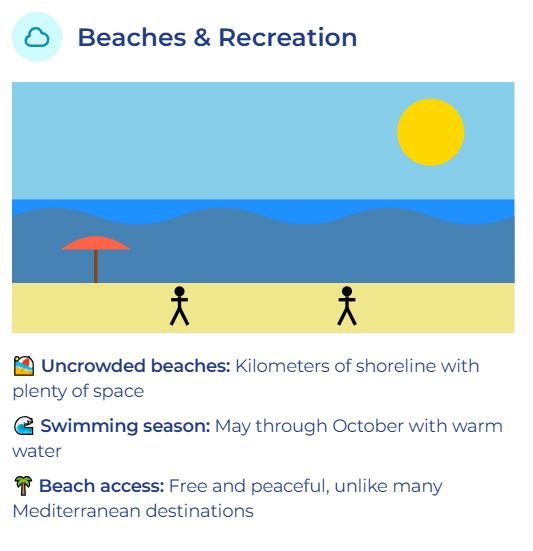
Bulgaria ranks as one of the safest countries in Europe. The safety evaluation for Burgas specifically rates 8 out of 10. While petty crime exists as in any city, serious criminal activity is minimal, allowing for a more relaxed lifestyle.
The main issue I had when I was there is that some people drive very recklessly, so to cross the street requires you to be careful.
Your $1000 monthly budget can cover all your basic needs. Rent for a one-bedroom apartment in the city center is about $482. A gym membership costs around $28.90 per month. Utilities usually range between $60 and $80. A monthly bus pass is about $27. Groceries are much cheaper than in the U.S. This leaves you with $300-400 monthly for entertainment, dining out, and travel.
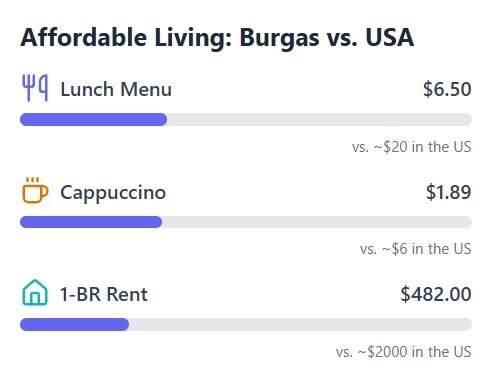
Burgas offers fiber connections under $20 monthly, and Bulgaria has ranked in the top 5 globally for broadband speed. The 4G coverage reaches throughout the city, ensuring you’ll have a reliable connection for remote work or video calls with family.
Transportation options in Burgas include local buses and taxis. The city’s size makes many daily activities walkable, while public transport costs remain minimal. Burgas Airport provides connections to major European cities.
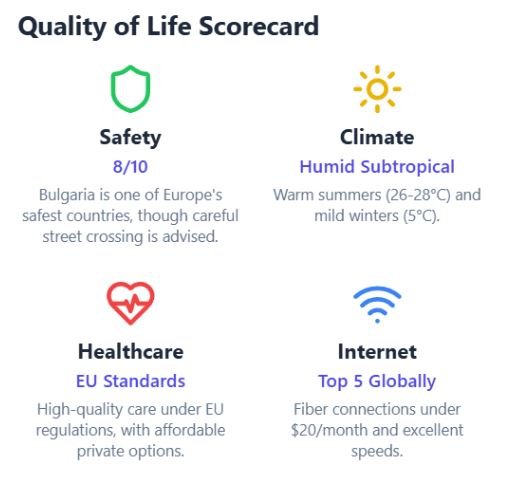
The culture is a mix of traditional Bulgarian customs and modern European influences. You’ll find friendly expat communities and many locals who speak English, especially in tourism and business.
There are many, many Brits in Burgas, so if you want to watch even a West Ham game, probably there will be a sports bar broadcasting it – why would you want to watch West Ham is another matter altogether…

And there is one common thing between Chile, Bulgaria, and the next country in our list: all of them are good wine producers.
Argentina

The Argentine economic struggle is nothing new. For years, people who earn their income in hard currency (meaning Dollars, Swiss Francs, Euros, British Pounds, etc) have known that Argentina is a very inexpensive place.
What makes Argentina unique among the countries with severe currency problems is that it is not a violent place like Venezuela nor does it have collapsing public services like South Africa.
No, in fact, despite all the crises, Argentina is still the second most developed country in South America, just after Chile Its diverse culture, beautiful landscapes, and rich history contribute to its appeal, making it one of the best countries for retirement in South America. Furthermore, the cost of living is relatively low compared to many other countries, allowing retirees to enjoy a more comfortable lifestyle. As a result, Argentina continues to attract expatriates seeking both adventure and tranquility in their golden years.
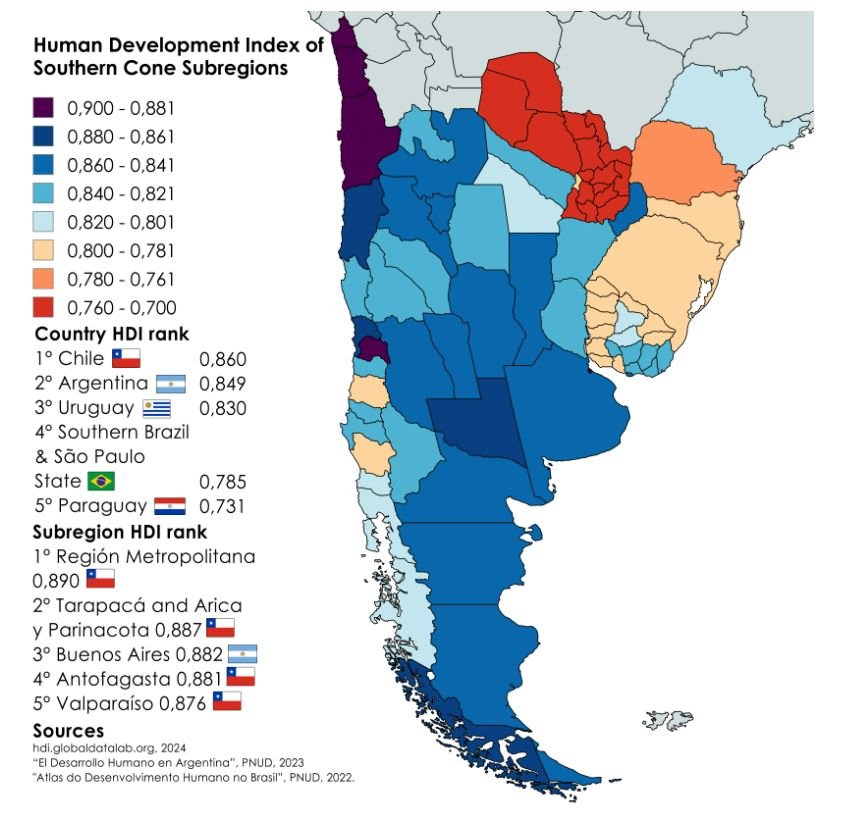
And it has a culture easier to adapt to – Argentinians are some of the nicest people I’ve ever met in my life.
This is one of the reasons I chose to go there as a destination for my honeymoon.
But just like with Chile, I would NOT recommend you to live on a budget in the Argentine capital, Buenos Aires, because Buenos Aires is EXPENSIVE.
However, Argentina offers more than that – much more, like their own “Napa Valley”, a world-class wine country, where award-winning bottles of Malbec can cost as little as $3 directly from the winemaker.
Mendoza sits at the foot of the Andes Mountains, surrounded by vineyards. This city is in western Argentina, around 1,037 kilometers from Buenos Aires. You can get there in 12 to 14 hours by bus or just 1.5 hours by plane. About 1.2 million people live in the Greater Mendoza area, making it the fourth-largest city in Argentina. It sits 760 meters above sea level, which is great for growing wine grapes and enjoying a pleasant lifestyle.
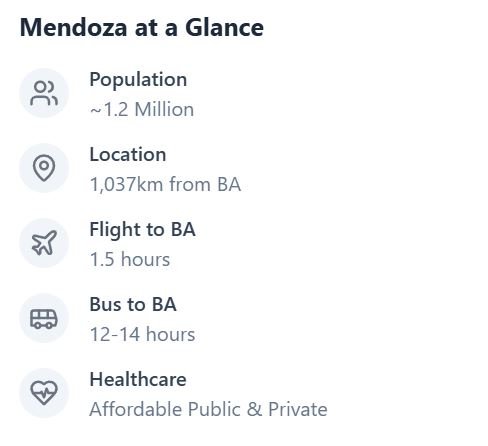
And despite all these great characteristics, it is still 61% cheaper than San Diego in California!

The climate delivers over 300 days of sunshine annually. Summer highs are around 32 degrees Celsius from December to March, while winter day highs are near 14 degrees from June to September, with nights dropping near freezing. The dry climate means low humidity, making even hot summer days comfortable.
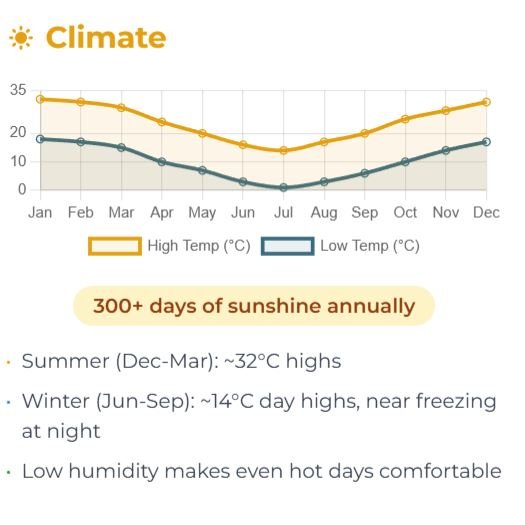
Haircuts cost about $5, gym memberships $20, and cappuccinos $1.50. These prices represent normal, everyday costs. Your monthly gym membership gives you access to modern facilities that would cost $100-150 in most US cities. Restaurant meals include multiple courses with locally produced wine, all without destroying your budget.
The outdoor lifestyle is incredible. Ski resorts are a few hours away, and hikes in the Andes provide world-class adventures. During summer months, the same mountains offer hiking, mountaineering, and rock climbing. This proximity to both mountain adventures and valley wine tours provides lifestyle options few places can match.
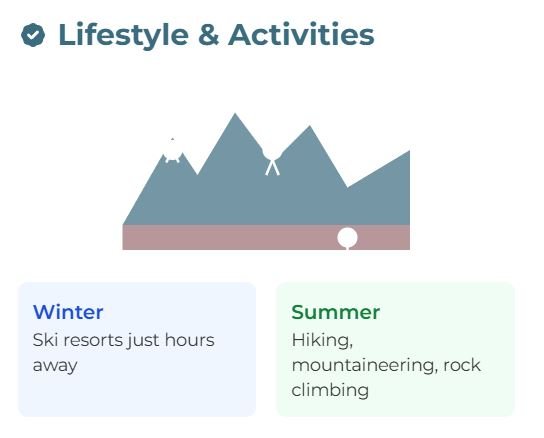
Mendoza has a European feel thanks to Italian and Spanish immigration, but with prices that make Europe look expensive. The city’s architecture reflects this influence with wide, tree-lined avenues. The downtown area has parks, plazas, and buildings that feel like those in European cities—but without the high prices or big crowds. The city’s culture shows up in its food, too. You’ll find great Italian restaurants, Spanish-style dishes, and classic Argentine meals.
Light rail, trolleybuses, and buses make getting around simple and affordable. Public transport costs remain minimal, and the organized street layout makes navigation straightforward, whether you’re walking, using public transport, or driving.
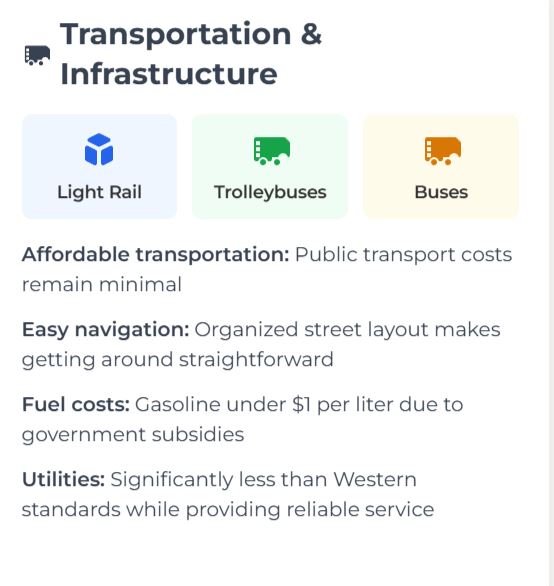
Mendoza has public hospitals like Hospital Paroissien and private clinics, where consultations cost a fraction of US prices. Both public and private facilities operate throughout the city. Private health insurance remains affordable and gives you access to shorter wait times.
Your biggest decision each day is which winery to visit, not whether you can afford groceries.
Rent for a one-bedroom apartment in the city center runs $300-400 monthly, leaving substantial room in your $1000 budget. Gasoline is under $1 per liter due to government subsidies, making transportation costs minimal. Utilities and internet services cost significantly less than Western standards while providing reliable service.
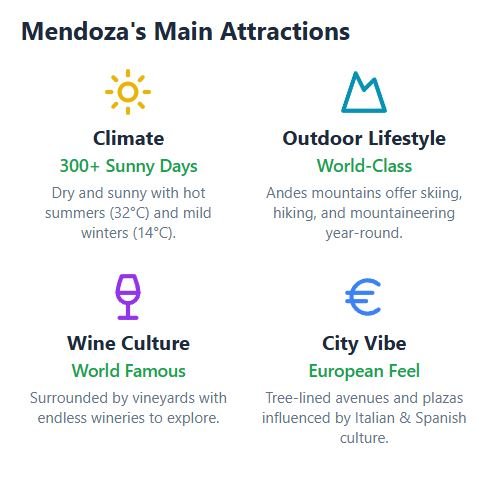
This is a place where wine lovers and mountain fans can enjoy the lifestyle they’ve always wanted, without breaking the bank. With your monthly budget, you can afford a nice home, great meals, top-quality wine, fun outdoor trips, and good healthcare, with extra money left for savings or travel.
But what if safety matters more than anything else to you?
And talking about things that matter – your opinion matters to me, so tell me in the comment section which country you would like me to cover next.
Poland
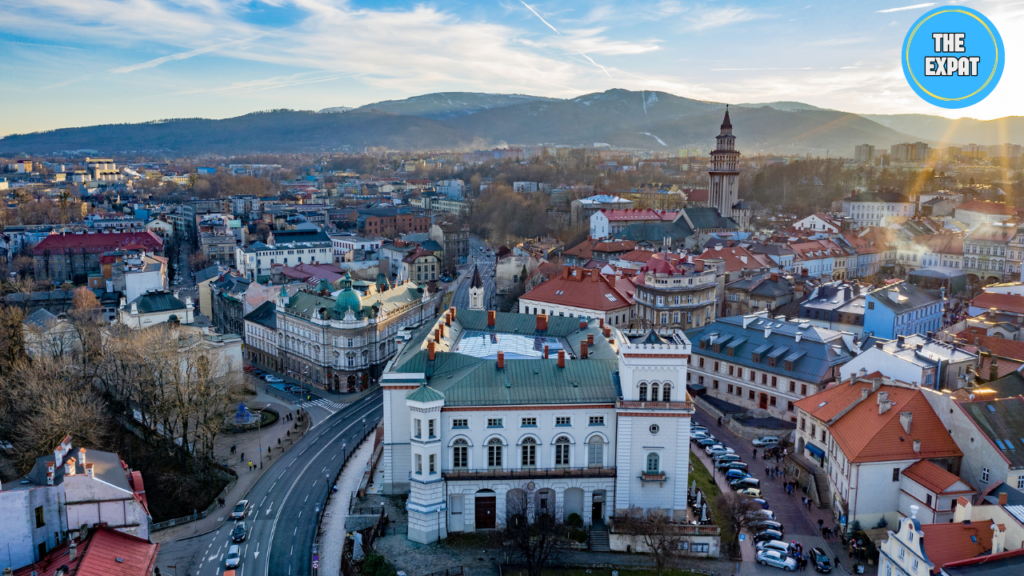
Just like with the case of Chile and Argentina, in Poland, the idea of living on $1000 is possible, but NOT in the capital. On, absolutely not – Warsaw nowadays is more expensive than Berlin.
The price of a garage in Warsaw is the same as the price of a 4-room apartment in smaller cities, it is insane.

But….
What if I told you there’s a charming mid-sized Polish city, close to some of the most beautiful mountains in central Europe, where $1000 a month doesn’t just cover basics – it could even allow you to go skiing a few times per year.
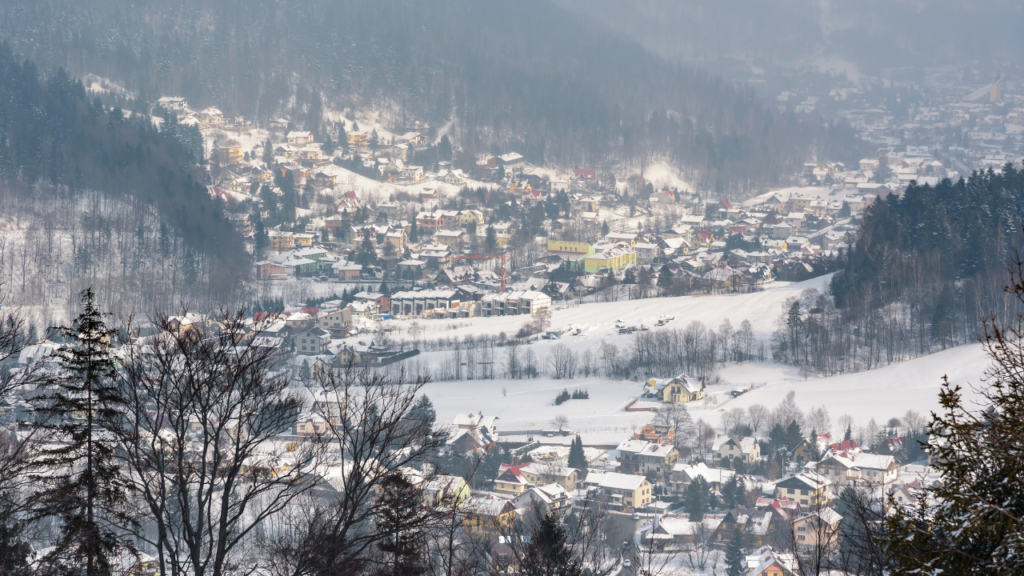
Bielsko-Biala in southern Poland sits near the Beskid Mountains, close to both the Czech and Slovak borders. This city has around 165,000 residents, creating a proper urban environment without the usual headaches of a large metropolis. You can reach Warsaw in 3-4 hours by express train.
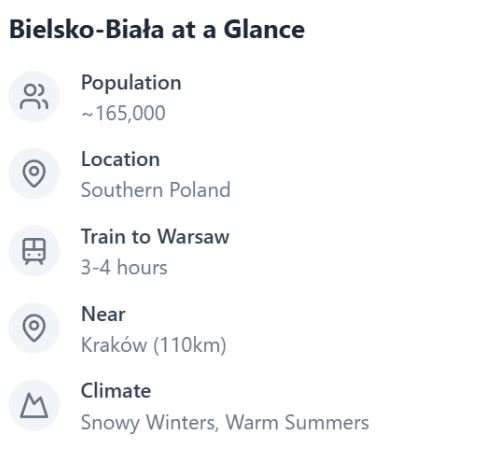
It is one of my favourite places in Poland, especially the surrounding mountain towns that are lovely, really really lovely. When I spent time there, I was amazed by how well connected all these small towns are to the larger Bielsko Biala.
The city’s strategic location also puts you just 110 kilometers from Krakow and 80 kilometers from Katowice.

Poland’s homicide rate is 0.68 per 100,000, making it one of Europe’s safest countries. People walk around at night without concern, leave bicycles unlocked, and don’t worry about basic safety issues that are common elsewhere.
As an EU country, the healthcare system operates at a high European standard. Bielsko-Biala has a large public hospital, Szpital Wojewódzki, along with several private clinics. EU citizens can use their European Health Insurance Card for public healthcare access, while private consultations remain affordable for non-EU residents.
With a $1000 monthly budget, you can live well. Rent for a one-bedroom apartment in the city center costs approximately $634, and utilities run about $279, leaving you room for food, entertainment, and travel. Haircuts cost $6, gym memberships $26, and basic restaurant meals $7.50. A monthly public transport pass runs around $35.
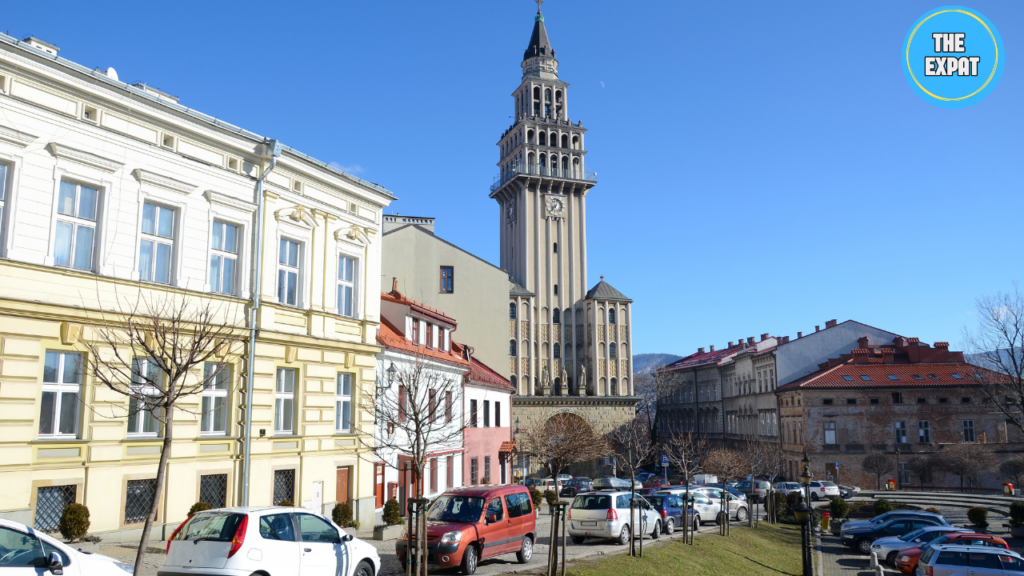
The infrastructure is impressive, with fiber internet plans available for $15-20 monthly and well-maintained roads, including a modern ring road. Rail connections provide frequent train services to Kraków and Katowice, making regional travel simple.
You’re two hours from the mountains, three hours from the beach, and four hours from major European capitals. The Beskid Mountains provide immediate access to hiking trails and ski resorts just minutes from the city center. The Baltic Sea coast is reachable for weekend trips, while cities like Prague, Vienna, and Budapest are within comfortable driving distance.
The food is hearty and affordable, with traditional Polish cuisine emphasizing filling, flavorful meals that cost a fraction of Western European prices. A cappuccino costs $2.50, and gasoline is about $1.45 per liter. Local markets provide fresh produce, meat, and dairy at prices that make grocery shopping stress-free.

The culture reflects a modern European nation with strong traditional values. You’ll find genuine hospitality, and English-speaking communities of expats and locals are growing. Learning basic Polish helps with daily interactions, but essential services accommodate English speakers reasonably well.
The climate includes winter highs around 1-3 degrees Celsius with snow, while summers reach 22-24 degrees. Some expats find the cold winters challenging, but the city’s heating infrastructure and indoor amenities make winter living comfortable.
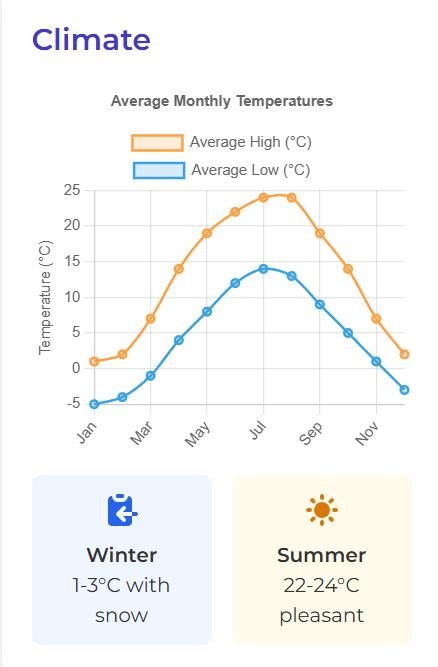
Here, safety and affordability meet in a way that proves you don’t have to choose between security and savings. Your budget provides European-standard living with mountain access, cultural opportunities, travel convenience, and a genuine sense of security that lets you focus on enjoying life.
Now let’s say that you would rather live in a smaller city – which is not the case of any of the 4 that I mentioned above, since all of them have more than 150,000 residents.
I wrote an article specifically for you, with the 10 best small cities in Europe to live in – and surprise: many of them are EVEN CHEAPER than those you saw in this article.
Levi Borba is the founder of expatriateconsultancy.com, creator of the channel The Expat, and best-selling author. You can find him on X here. Some of the links above might be affiliated links, meaning the author earns a small commission if you make a purchase.
